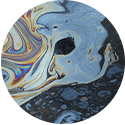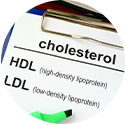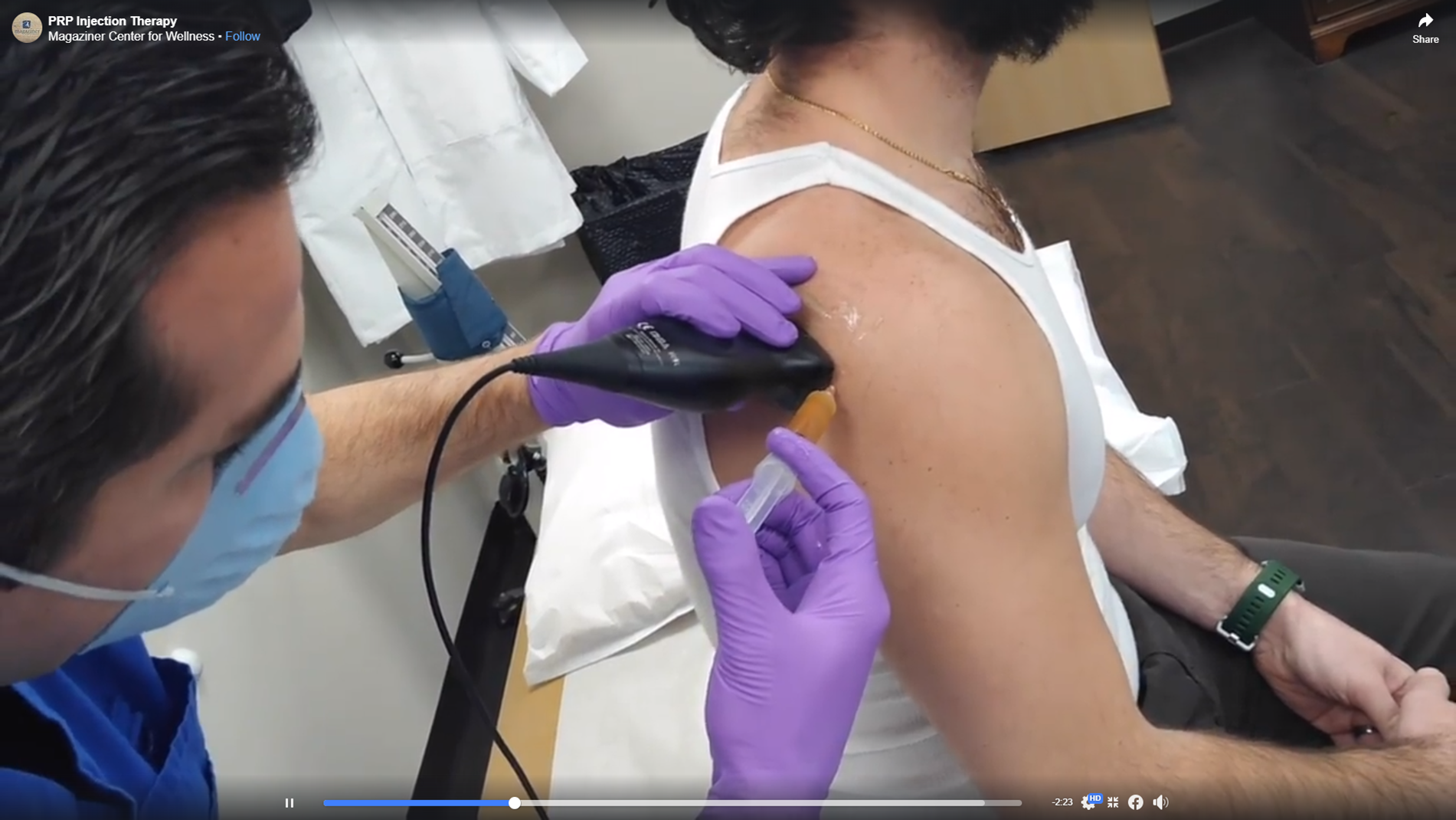People who are about to get a surgery do a lot of research online. They want to know all about the surgery, the side-effects and the recovery times they may anticipate once they have the surgery. Perhaps scared off by the post-surgical recovery times, intensive physical therapy requirements after surgery, the concerns over the success or failure of the surgery, and their own need to get back to work or sport, they also spend a lot of time researching alternatives to that surgery. Typically a last chance before surgery option they are recommended to by their doctor is Platelet Rich Plasma Therapy or PRP.
PRP is derived from your own blood. It is that portion of your blood that is “rich” in growth factors and repair platelets. The treatment simulates the body’s natural soft-tissue injury response. It introduces platelet cells and healing factors to the area that initiate repair.To create platelet-rich plasma therapy, a small sample of your blood is drawn, similar to a lab-test sample. The blood is placed in a centrifuge which separates the platelets from the other components. The concentrated platelet-rich plasma is then injected into and around the point of injury, with the treatment goal of significantly strengthening the body’s natural healing response and accelerating healing.
Why do patients seek regenerative injections instead of rotator cuff surgery? High surgical failure rates.
There are patients who visit us, who after doing their research, came to realize that there is a good chance their rotator cuff surgery will fail. Why?
High risk of failure after cortisone injection
For one thing, they had past cortisone injections. We cover the increased risk factors of multiple cortisone injections on rotator cuff surgery in our article Cortisone Injections Lead to Post-Surgical Rotator Cuff Complications.
We cite many research studies in that article including one a January 2019 study (1) lead by the Mayo Clinic which examined the impact of one or more shoulder corticosteroid injections a patient may have received for shoulder pain up to a year prior to having rotator cuff repair. Here are the findings: “A single shoulder injection within a year prior to arthroscopic rotator cuff repair was not associated with any increased risk of revision surgery; however, the administration of 2 or more injections was associated with a substantially increased risk of subsequent revision rotator cuff surgery. . . caution is recommended when considering more than 1 shoulder corticosteroid injection in patients with potentially repairable rotator cuff tears.”
Many reasons beyond cortisone that a rotator cuff surgery will fail
Another study from the Mayo Clinic (2) discusses the problem of what to do with a younger patient who had a failed rotator cuff surgery here they outline many factors involved in the failure of rotator cuff repair.
“Management of failed rotator cuff repair may be difficult, especially in young patients. Various non-modifiable and modifiable patient factors, including age, tendon quality, rotator cuff tear characteristics, acute or chronic rotator cuff tear, bone quality, tobacco use, and medications, affect rotator cuff repair healing.
Surgical variables, such as the technique, timing, tension on the repair, the biomechanical construct, and fixation, as well as the postoperative rehabilitation strategy also affect rotator cuff repair healing.”
There are many more studies which suggest a high failure rate of surgery. This is why options, including PRP are being explored and rigorously researched in the medical community.
The search for a surgical option. Is PRP a realistic choice?
For many people, PRP is a good and realistic choice for their rotator cuff injury. How do you know if you are one of these people? An examination by a doctor well experienced in treating rotator cuff injuries with regenerative therapies is a good place to start. But for those of you doing your research, let’s look at some studies and patient outcomes recently published in the medical literature.
A November 2019 study (3) compares three treatments, cortisone, PRP, and Prolotherapy. Prolotherapy is another injection treatment we offer. This treatment focuses on ligament and tendon repair by using a simple sugar, dextrose, as a healing stimulus to attract your immune system at the site of the Prolotherapy injection. It acts very much like PRP in its repair function. The main difference is the strength of the injectable. The suggested use of Prolotherapy is determined by the extent of the injury being treated and is discussed at the time of our physical examination.
Here are the results of this study
In patients with rotator cuff tears, corticosteroid injection provides short-term relief for pain, function, and quality of life, while PRP injection works for long-term wellbeing. For all types of applied injections, (including the Prolotherapy treatment) improvement in pain, function and quality of life were observed.
PRP worked for the long-term, cortisone and its above mentioned side-effects, the short-term. PRP treatment has minimal side-effects.
An August 2017 (4) study found:
Ultrasound guided platelet rich plasma injection for partial rotator cuff tears is an effective procedure that leads to significant decrease in pain, improvement in shoulder functions, much cost-effective and less problematic compared to a surgical treatment.
Another August 2017 (5) suggests that PRP addresses the problem of muscle atrophy with fatty degeneration often seen in rotator cuff muscles with torn tendons. PRP promotes proliferation of myoblast cells, (cells that make muscles while suppressing fatty degeneration).
Combined university research lead by Drexel University College of Medicine found that a single injection of PRP resulted in safe, significant, sustained improvement of pain, function, and MRI outcomes in the “difficult to treat” Rotator Cuff Tendinopathy patients.(6)
More recently a May 2021 study (7) examined the problem of “no consensus regarding treatment of partial thickness tears that fail conservative treatment.” The purpose then of their study was to look at the efficacy and confirm the safety of dual injection PRP into the shoulder of patients with rotator cuff pathology who have failed conservative treatment with follow up to two years. The conclusion of their study was “PRP injection is a safe and effective treatment for rotator cuff injury in patients who have failed conservative treatment of activity modification and physical therapy without deterioration of results two years after treatment. Better results are obtained with greater structural tendon damage than in shoulders with inflammation without structural damage.”
Cortisone or PRP injections?
An October 2020 study in the journal Arthroscopy (8) compared platelet-rich plasma (PRP) to standard corticosteroid in providing pain relief and improved function in patients with rotator cuff tendinopathy and partial thickness rotator cuff tears. In this study 99 patients received one PRP injection or one cortisone injection. Then they were monitored at 6 weeks, 3 and 12 months post-injection. In this randomized double blind study patients with partial rotator cuff tears or tendinopathy experienced clinical improvement in pain and patient-reported outcome scores after both ultrasound-guided corticosteroid and PRP injections. Patients who received PRP obtained superior improvement in pain and function at short-term follow up (3 months). There was no sustained benefit of PRP over corticosteroid at longer-term follow-up (12 months).
At the Magaziner Center we have seen similiar results from patients who had PRP in other offices. They usually contact us to see why PRP did not help their shoulder pain long-term. The reason is usually, they only had one injection. PRP is usually not a one-time treatment.
What Do We Do at the Magaziner Center for Wellness?
We have noted in numerous articles on our website that a single treatment, a single injection of anything will usually not reverse the accumulated years of joint degeneration. The same is said for problems of rotator cuff tendon damage. More experienced physicians know that to repair the shoulder, more than one treatment will be necessary.
Let’s look at a December 2018 study from Loyola University on PRP treatments.(9)
Multiple studies have been published recently regarding the use of PRP for the operative and non-operative treatment of rotator cuff tears. . . . Despite attempts to standardize and classify PRP formulations, there remains great variation in the inter- and intra-subjection composition, preparation, and administration techniques of PRP, limiting the conclusions that can be drawn regarding the utility and effectiveness of this biologic treatment.
At the Magaziner Center for Wellness, we conduct a thorough physical evaluation to determine the nature and extent of an injury. When pain persists past conventional treatments – and provided the patient is otherwise in good health – we use regenerative orthopedic procedures to naturally repair damage and eliminate related pain. Both treatments are natural and non-surgical.
Additionally, we use innovative manual therapies to realign the shoulder joint to help ensure proper shoulder motion, and also pay careful attention to ligament and joint capsule tissue that is often injured at the time of a rotator cuff tear. Would you like to talk to us about your rotator cuff injury? Contact the Magaziner Center for Wellness
Related articles:
Cortisone Injections Cause Post-Surgical Rotator Cuff Complication
References:
1 Desai VS, Camp CL, Boddapati V, Dines JS, Brockmeier SF, Werner BC. Increasing numbers of shoulder corticosteroid injections within a year preoperatively may be associated with a higher rate of subsequent revision rotator cuff surgery. Arthroscopy: The Journal of Arthroscopic & Related Surgery. 2019 Jan 1;35(1):45-50.
2 Elhassan BT, Cox RM, Shukla DR, Lee J, Murthi AM, Tashjian RZ, Abboud JA. Management of failed rotator cuff repair in young patients. JAAOS-Journal of the American Academy of Orthopaedic Surgeons. 2017 Nov 1;25(11):e261-71.
3 Sari A, Eroglu A. Comparison of ultrasound-guided platelet rich plasma, prolotherapy, and corticosteroid injections in rotator cuff lesions. Journal of back and musculoskeletal rehabilitation. 2019 Nov 8(Preprint):1-0.
4 Sengodan VC, Kurian S, Ramasamy R. Treatment of Partial Rotator Cuff Tear with Ultrasound-guided Platelet-rich Plasma. J Clin Imaging Sci. 2017 Aug 14;7:32. doi: 10.4103/jcis.JCIS_26_17. PMID: 28900553; PMCID: PMC5582534.
5 Takase F, Inui A, Mifune Y, Sakata R, Muto T, Harada Y, Ueda Y, Kokubu T, Kurosaka M. The effect of platelet-rich plasma on degeneration change of rotator cuff muscles: In vitro and in vivo evaluations. J Orthop Res. 2016 Sep 29. doi: 10.1002/jor.23451. PubMed PMID: 27684960.
6 Scarpone M, Rabago D, Snell E, Demeo P, Ruppert K, Pritchard P, Arbogast G, Wilson JJ, Balzano JF. Effectiveness of Platelet-rich Plasma Injection for Rotator Cuff Tendinopathy: A Prospective Open-label Study. Glob Adv Health Med. 2013 Mar;2(2):26-31. doi: 10.7453/gahmj.2012.054.
7 Prodromos CC, Finkle S, Prodromos A, Chen JL, Schwartz A, Wathen L. Treatment of Rotator Cuff Tears with platelet rich plasma: a prospective study with 2 year follow‐up. BMC Musculoskeletal Disorders. 2021 Dec;22(1):1-3.
8. Kwong CA, Woodmass JM, Gusnowski EM, Bois AJ, Leblanc J, More KD, Lo IKY. Platelet Rich Plasma in Patients with Partial Thickness Rotator Cuff Tears or Tendinopathy Leads to Significantly Improved Short-Term Pain Relief and Function Compared to Corticosteroid Injection: A Double-blind Randomized Controlled Trial. Arthroscopy. 2020 Oct 27:S0749-8063(20)30893-8. doi: 10.1016/j.arthro.2020.10.037. Epub ahead of print. PMID: 33127554.
9 Schneider A, Burr R, Garbis N, Salazar D. Platelet-rich plasma and the shoulder: clinical indications and outcomes. Curr Rev Musculoskelet Med. 2018 Dec;11(4):593-597. doi: 10.1007/s12178-018-9517-9. PMID: 30196385; PMCID: PMC6220008.





































Recent Comments